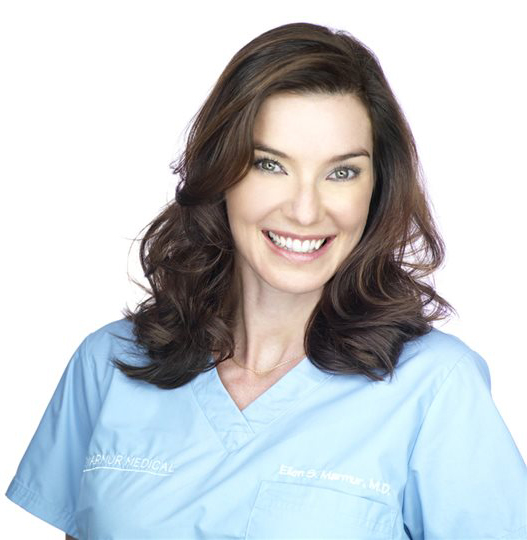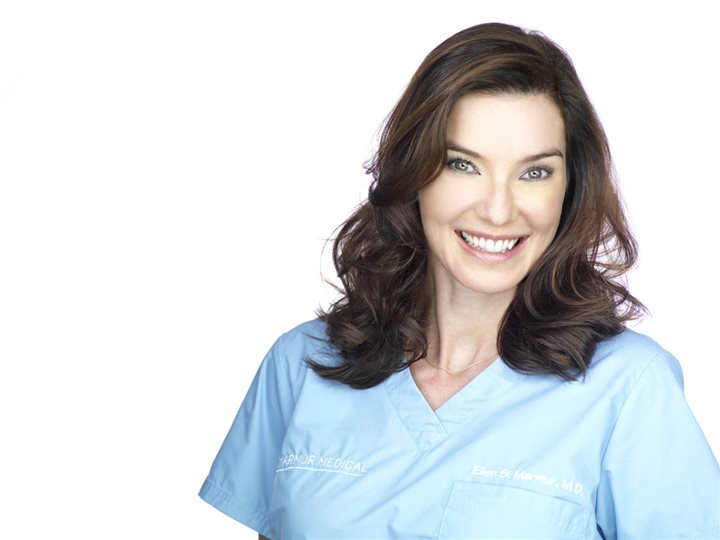 Moisture concerns: How to spot the good and the bad before it gets ugly.
Moisture concerns: How to spot the good and the bad before it gets ugly.From creams and gels to serums and oils, moisturizers are often at the forefront of a woman’s beauty routine. However, moisture can also be regarded for the negative effects it can have on skin, as in the case of sweat and surface wetness that can lead to a range of various conditions. These quintessential examples of “good moisture” and “bad moisture” demonstrate that we should consider both when it comes to a comprehensive skin care routine.
Dove Dermatologist Dr. Ellen Marmur shares the difference between the good and the bad, while offering her tips for achieving softer, smoother skin from head to toe.
 Q: First, how does our skin differ from place to place on our bodies?
Q: First, how does our skin differ from place to place on our bodies?A: Fundamentally, all skin is made up of the same building blocks, but different characteristics such as thickness, pigmentation, hair follicles and sweat glands all factor into how we care for different parts of the body. For example, the skin on our neck and face is very fine, while the skin on our arms and legs have more sweat glands and hair follicles. There are also unique hybrid areas such as our underarms, where the skin is fine like on our neck, but also has more sweat glands and hair follicles.
Q: With so many characteristics, does all skin need moisture?
A: Absolutely. The skin is an intricate protective layer of cells that requires adequate hydration to stay healthy and looking its best. A lack of moisture can weaken the stratum corneum (our outermost epidermal layer), which helps protect underlying tissue from bacteria and enzymes. In addition, moisture contributes to the overall softness and smoothness of skin and can help reduce itchy dryness, uncomfortable irritation and visible redness. Throughout the day, our skin loses moisture due to a range of factors – from fabrics we wear to various climate conditions – and that moisture needs to be replenished in order to maintain the skin’s overall balance.
Q: What is the difference between good and bad moisture?
A: “Good moisture” is an important element of proper skin care. It refers to applying topical moisturizers that are formulated to draw moisture into the outer layer of our skin to replenish hydration lost throughout the day. “Bad moisture” refers to surface moisture that can disrupt the skin’s healthy barrier. It can come in the form of sweat that leaves behind salt, enzymes and odor-causing bacteria or it can come from prolonged exposure to water (e.g., a day in the pool, a long, hot shower) that can actually cause the skin to crack and fissure.
Q: How do we address the good and the bad?
A: Be sure to drink plenty of water every day – it’s a golden rule for a reason. Have your fun in the pool and enjoy your luxurious showers, but try to keep water exposure to around 15 minutes at a time. Lastly, we often think of places like our face, neck, hands and legs when it comes to moisturizing, but don’t forget those hybrid parts of the body like your underarms where you need to apply "good moisture" and ward off "bad moisture."
Q: What products can you recommend to help?
A: I always try to recommend multitasking products to streamline and simplify my patients' daily routine. Dove Advanced Care Anti-Perspirant/Deodorant is a great option for underarms because it provides 48-hour odor and wetness protection and is formulated with moisturizing humectants to provide the added benefit of softer, smoother skin. I also recommend finding a multitasking daily facial moisturizer that has an SPF of 30 or higher with built-in UVA/UVB protection. Another great tip is to wear moisture-wicking technical fabrics that will not only keep you cool, but also prevent sweat and bacteria from remaining on your skin.
Visit Dove.com for more tips from Dr. Ellen Marmur and to learn more about Dove Advanced Care Anti-Perspirant/Deodorant.